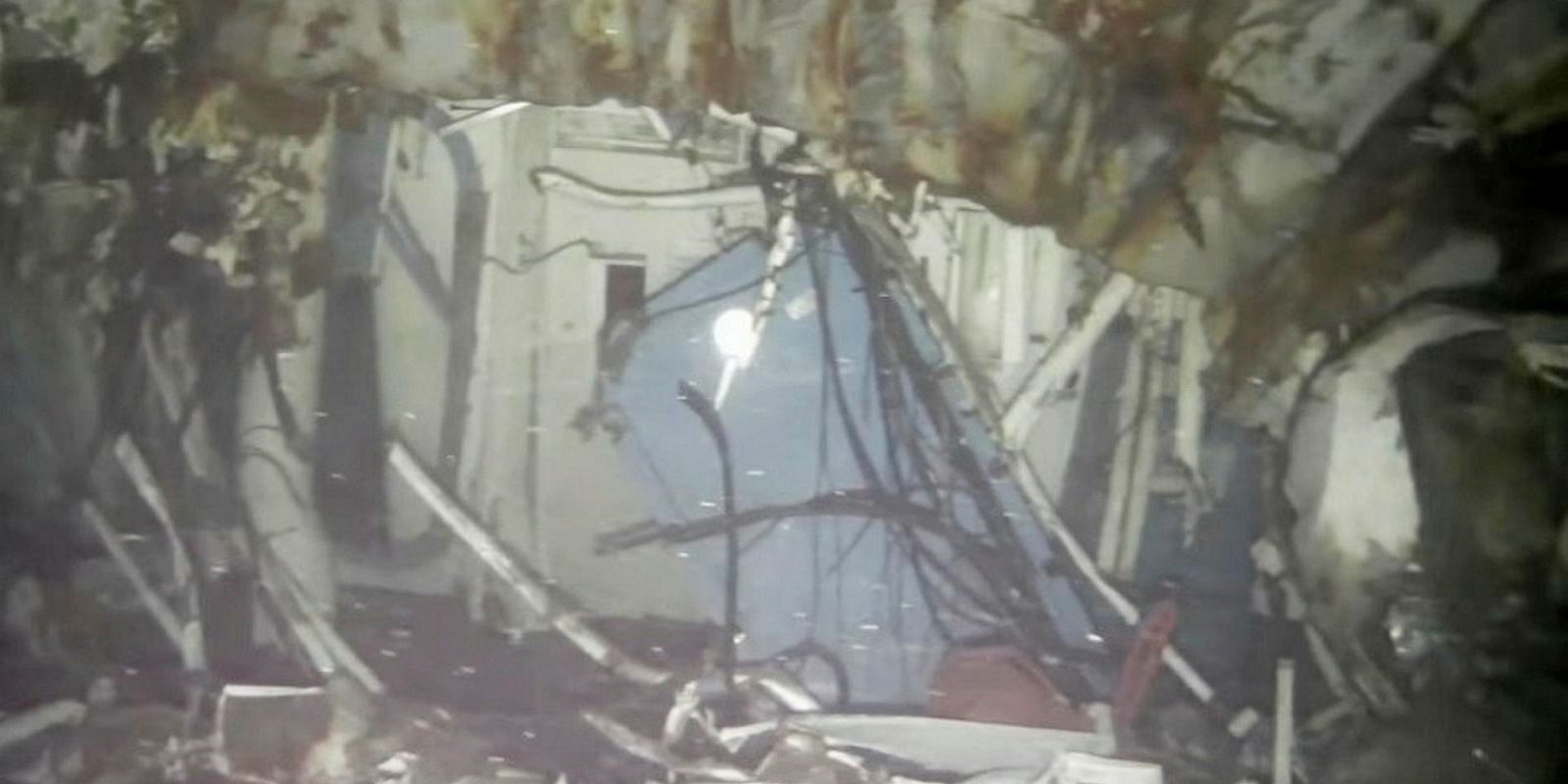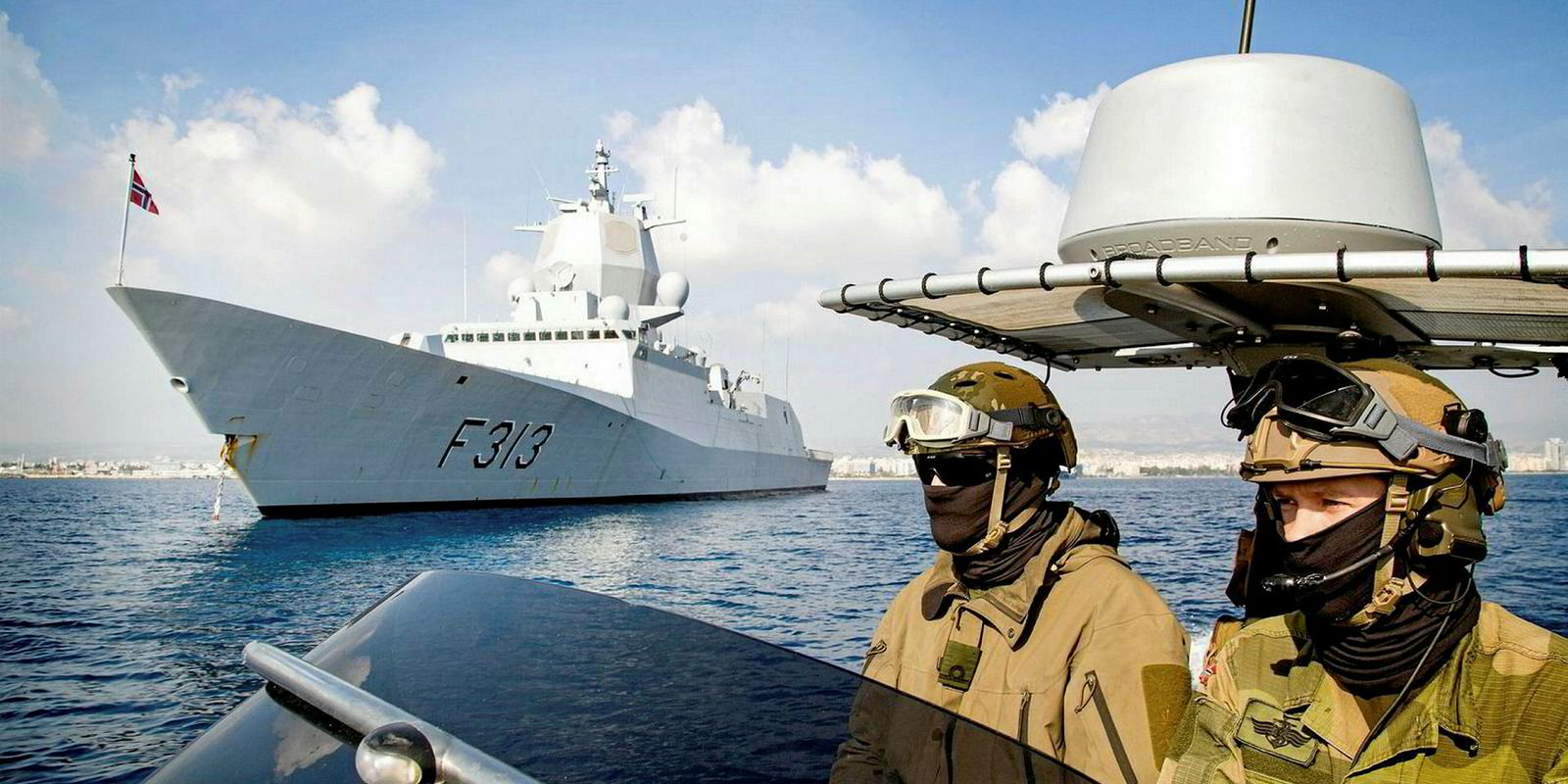Boa Offshore CEO Helge Kvalvik has revealed the inside story of the raising of the sunken Norwegian warship Helge Ingstad.
The vessel sank on 8 November following a collision with a Tsakos tanker in Hjeltefjorden on the west coast of Norway, substantially damaging its starboard side.
“This has been one of the most complex and successful salvage operations in the industry,” Kvalvik said.
“An operation like this has never previously been executed. It has been complex and challenging, but we managed to do what we promised. We are pleased to see Helge Ingstad back to its owner.
He explained there were four main steps in the salvage plan.
The vessel had to be secured to the shore and then the fuel had to removed and lifting chains placed around the hull.
The ship was then raised, before it was lifted on to the 25,000-dwt submersible Boabarge 33, towed by the 5,150-bhp tug Boa Balder (built 2009), and redelivered to the navy.
The vessel was becoming more and more submerged in the water and caused great challenges for operation planning, the CEO said.
The fuel removal caused changes in weight and the centre of gravity, he added.
"Since the integrity of all the tanks and the systems that contained fuel was found intact, it was decided...that only the fuel tanks that were exposed to the lifting chains were to be emptied."
Weapons removed
In total about 150 cbm of marine gasoil was lightered.
Weapons like NSM missiles and torpedoes were also taken off the ship by specialised navy divers.
The frigate was raised on 26 February.
Kvalvik said: “During the further lifting and de-watering process, it became clear that the weather forecasts had changed and there was predicted some long-period swell at site in the very last stage of the process.
"This could induce some risk to the involved personnel, and as that was unacceptable, it was decided to use a part of the contingency plan: to transfer HNoMS Helge Ingstad to a sheltered location for the remaining operations."





